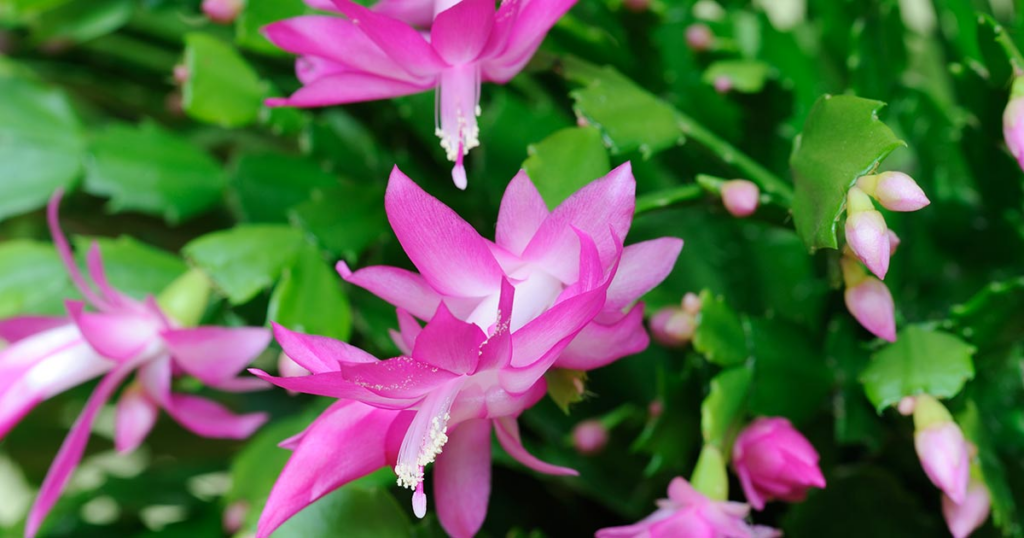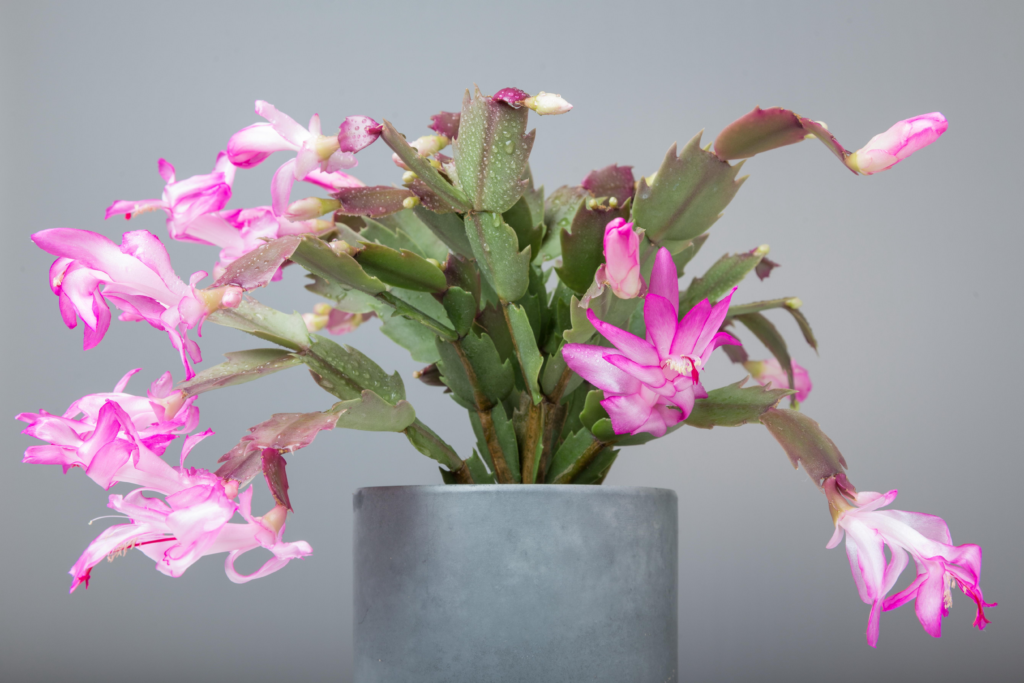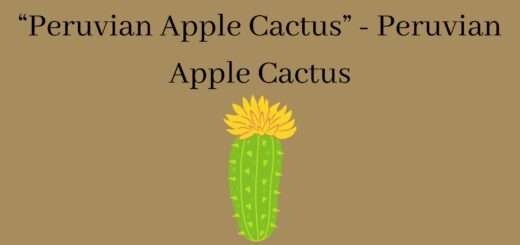Christmas Cactus cold tolerance (Growing and Caring)
I have been growing Christmas cactus for the past 3 to 4 months, which has surprised me by blooming in extreme cold. Isn’t this interesting? This has sparked my curiosity to delve deeper into the Christmas cactus cold tolerance.
I have discovered many interesting facts about Christmas cacti, which I will explain. This will not only inform you about them but also teach you ways to grow and care for Christmas cactus. If you have any queries related to Christmas cactus, feel free to ask me in the comment section.
Christmas Cactus Cold Hardiness:
The Christmas cactus houseplants are used to bloom in flower all over winter months and grow in bright, bountiful, pink blooms. These are plants that tend to grow in USDA zone 9 to 11.
The houseplants are greater in size when compared to other cacti and belong to the tropical category. They are plants that do not tolerate frost and need some cold temperatures that help them to bloom.
A Christmas cactus plant that belongs to tropical plants that like warm, balmy temperatures, moderate to low moisture levels, and bright sun. You need to keep the plant away from drafts, heaters, and fireplaces. During night the perfect temperature range should be from 60 to 65°. For perfect blooming, you can keep the plant in a cooler area in October month where the temperature is about 50°.
After the blooming of the flower, you need to keep the plant away from certain temperature fluctuations that will cause the plant to lose its flower. I will suggest you take the plant out during summer when it will get double light in starting and avoid keeping the plant in the wind. Avoid the plant keeping outside and fall as it will damage the Christmas cactus.

| Common Name | Christmas cactus, holiday cactus |
| Botanical Name | Schlumbergera bridgesii |
| Family | Cactaceae |
| Plant Type | Succulent, cactus, perennial |
| Mature Size | 6-12 in. tall, 12-24 in. wide |
| Sun Exposure | Partial |
| Soil Type | Well-drained, loamy |
| Soil pH | Neutral, acidic |
| Bloom Time | Winter |
| Flower Color | Pink, purple, red, white, yellow, peach |
| Hardiness Zones | 10-12 (USDA) |
| Native Area | South America |
Christmas Cactus Care:
The Christmas cactus does belong to the cactus family and is native to the rainforest. In Brazil, the plants grow as epiphytes of tree branches. To grow them indoors you need to provide certain requirements such as well-draining potting soil that has perlite, and a container having good drainage holes because the plants are root rot sensitive.
To grow them, you need to avoid overwatering conditions and make sure the water does not sit in the saucer container. Need to water them during spring and summer months and evenly maintain the moisture of the soil during flowering.
Light:
- If you notice the flower color is waiting you need to reduce the water quantity until the growth is maintained during spring.
- The Christmas cactus plant can tolerate bright light during bloom time.
- They thrive best when planted under partially shaded conditions during the spring and summer months.
- In Indoors you can place them in a bright east or north-facing window.
- In case planting them outdoors you need to find a place where they receive filtered sunlight such as under a tree.
- Providing them with too much Light will cause the plant to look pale or yellow.
Soil:
- The Christmas cactus grows best in well-drained lightweight soil.
- To provide suitable soil you can mix three parts of to provide suitable soil you need to plant it in a potting soil with two parts of perlite that helps in good drainage.
- You can also use a specialized potting mix cactus.
Water:
- The watering needs to be done when the soil is dry to touch.
- Increase the watering during summer and reduce it during winter because of the temperature dropping and buds are used to bloom here.
- To make sure excess water gets drained out, you need to use a well-draining pot which will prevent the situation of waterlogging.
- Avoid sitting plants in standing water that will cause root rot.

Temperature and Humidity:
- You need to keep the Christmas cactus at 70 to 80°F from April to September which is the time for plant growth.
- Keep the plant away from drafts and sudden temperature changes which will shock your plant.
- Give the plant humidity by misting it or placing a tray of pebbles filled with winter under the pot during dry winter months.
Fertilizer:
- The right time for fertilizing the plant is in spring with a balanced ratio such as 20-10-20 at half strength of fertilizer.
- You need to provide the Christmas cactus with monthly feeding throughout August.
- Providing the plant with a low nitrogen fertilizer with 0-15-0 will boost up the flower bud formation.
- When taken care of properly, plants can live for decades.
Types of Christmas Cactus:
The Christmas cactus is a hybrid plant of Schlumbergera x buckleyi also named as Thanksgiving, or easter cactus that does look the same but is used to bloom at different times with different shapes of the leaves due to the subtle differences.
Thanksgiving cactus (Schlumbergera truncata):
Thanksgiving cactus is used to bloom at the end of November and does bloom with showy flower colors either in red, pink, peach, purple, orange, or white. The plant does have very pointed and claw-shaped projections on the leaves.
Christmas cactus (Schlumbergera russelliana):
It is a hybrid plant that is bred with S. truncata to form Schlumbergera x buckleyi. They are used to bloom at the end of December having magenta and white flowers. It consists of flattened leaf segments that are round in shape having few notches.
Easter cactus (Rhipsalidopsis gaetneri):
They are used to bloom with star-shaped flower buds during February and start to bloom flowers in March and May. it consists of tiny bristles on the edges of the leave that are rounded in shape.
How Cold Can Christmas Cactus Get?
To know about Christmas cactus cold hardiness you need to first understand the growing zone. The hardiness zone represents the average annual minimum winter temperature in which each zone is 10 degrees F, zone 9 has 20 to 25 degrees F and zone 11 consists of 45 to 50 degrees F.
Growing Christmas cactus is not good in frost or snowy places. In case the plants get more exposed to freezing the plant can suffer with pad damage.

Treating Christmas Cactus Exposed to Cold:
If you keep the Christmas cactus out in freezing temperatures the plant water stored in the tissue will freeze and expand and that will damage the cells present inside the pads and stems.
When the plant gets water thaws the tissue will damage and will not get that shape.
All this will result in the limping of stems, dropping of leaves, and rotten spots. To treat them you need to have patience and perform the following steps:
- First, remove the tissue that looks badly damaged or rotten.
- Need to provide the plant with light water but don’t make the soil soggy.
- Keep the plant in a place where the temperature is about 69 degrees F that is not warm and not hot.
- In case the plant is able to survive six months you can apply houseplant fertilizer that is diluted by half that too once a month during the growing season.
- If you are keeping the plant outside during summer you need to know that the cold tolerance of plants doesn’t extend to freeze so make sure to bring plants inside in hot summer.

Propagating a Christmas Cactus:
The Christmas cactus plant cuttings can be used for propagating new plants from parent plants and friends. Cutting propagation does help the plant to grow to full size. The propagation is best to be down in one to two months after the plant blooms. Here are some steps for propagating a Christmas cactus:
- First, fill the pot about 4 to 6 inches with potting soil cactus soil mix or you can use sand peat mixture.
- You need to take the cutting of one to four segments and then put it in a cool and dry place for some days to make sure the cut end dries out which will help in preventing the end from rotting.
- Now it’s time to pot cutting one inch into the soil and then watering it to keep the soil moist.
- To maintain the humidity around the plant, cover it with a plastic bag and fix it using a rubber band.
- The right time to remove the bag is after forming roots.
- The root formation will take place within 2 to 3 weeks.
- In case of rooting plants in water, place the cutting end in one to two inches of water and then you need to place them in indirect light.
- The cutting will have roots after several weeks.
- After growing roots about 2 inches long, you can plant the cutting in soil.
Growing a Christmas Cactus From Seed:
You can harvest seeds from plant pods or fruits. In the case of pods, you need to wait until it turns red which does change during fall. The following are some ways to grow Christmas cactus plants from seed:
- First, you need to wash pulp from the seeds then plant the seed into moist cactus soil mix or in a sphagnum peat moss and perlite.
- After this press the seed lightly into the soil and make sure not to cover them.
- You need to create humidity by covering the pot using a plastic wrap or plastic bag then keep the pot in indirect sunlight.
- Make sure to mist the soil surface or need to water the plant at the bottom after placing it on a tray that is filled with water.
- You can remove the plastic covering after growing roots that are grown after a few weeks.
- The right time to plant seedlings is when they get over 2 to 3 inches tall.

Potting and Repotting:
- There is no need to repot the plant again and again only repot them every 4 or 4 years or when you notice the roots of the plants are coming out of pot drainage holes. According to me the best time for repotting Christmas cactus is during spring after the end of the blooming season and the flowers start to wilt. Make sure not to repot the plant during the blooming phase.
- You need to shift the plant to a pot that is larger in size than the previous one.
- Before placing the plant you need to fill it with fresh potting soil at the bottom of the pot and remove the roots gently and remove the old soil from the roots after that only transfer the root ball in a new pot.
- Keep the plant in the new pot in a way that the root ball is about one inch below the surface and after placing the plant pat the soil around the plant.
- After transferring the plant provide the water to it and place the plant in low light for some days by giving the plant some time to adjust in the new pot.
Common Problems With a Christmas Cactus:
The Christmas cactus are plant that is very sensitive to temperature and humidity which comes in above-freezing temperatures so you need to maintain some temperature and environment.
Stunted Appearance or Growth Distortion:
- In case, you notice that the plant has stunted or distorted growth you need to check the plant if they are having mealybug infestation.
- The Mealybugs are insects that look like tiny white cotton dots which are about 1/8 to 1/4 inches long.
- They are used to first grow low on the leaf surface in dark, warm, and moist areas that too near the center stem of the cactus plants.
- These are insects that are used to feed on plant sap and leave sticky honeydew behind the leaves which starts causing mold to form on cactus.
Yellowed, Spotted, or Wilting Leaves or Stems:
- Growing of yellow leaves or stems, leaf spotting, or plant wilting is the indication of thrips on plants.
- The thrips are insects that have thin black slivers or tiny lobster-looking insects.
- The thrips are not used to cause damage to the stem and leaf directly but here virus is used to transmit impatiens necrotic spot virus.
- To treat the plant from thrip infestation you need to use insecticidal soap or horticultural oil.
- The leaves get wilted if you dont provide them with little light, and insufficient water, you need to check all the conditions and monitor the plant for improving the plant’s health.
Leaves Turning Red or Pink:
- The Christmas cactus leaves turn red or pink which is a symptom that the plant is receiving too much sun or too little water.
- In case the plant is kept in a widow that is getting direct sun you need to move the plant back to indirect light.
- If you find the soil is dried upto 1 inch deep you need to water the plant. I will suggest you water the plant only when the soil feels dry to avoid overwatering.
Root Rot:
- If the plant has Wilting, brown leaves, black or reddish spots on leaves and stems, and soggy soil all these are symptoms of having root rot.
- To save your plant you need to remove the plant from the pot and remove the excess soil from roots.
- You need to cut the soggy, discolored roots and sometimes need to replant them in a fresh dry potting medium.
- Make sure to give them some time to recover before watering them again.
Conclusion:
Now you know everything about Christmas cactus cold tolerance and if you are interested you can also learn how to grow and take care of them. Just make sure to learn about all the common problems that you can face while growing them.


